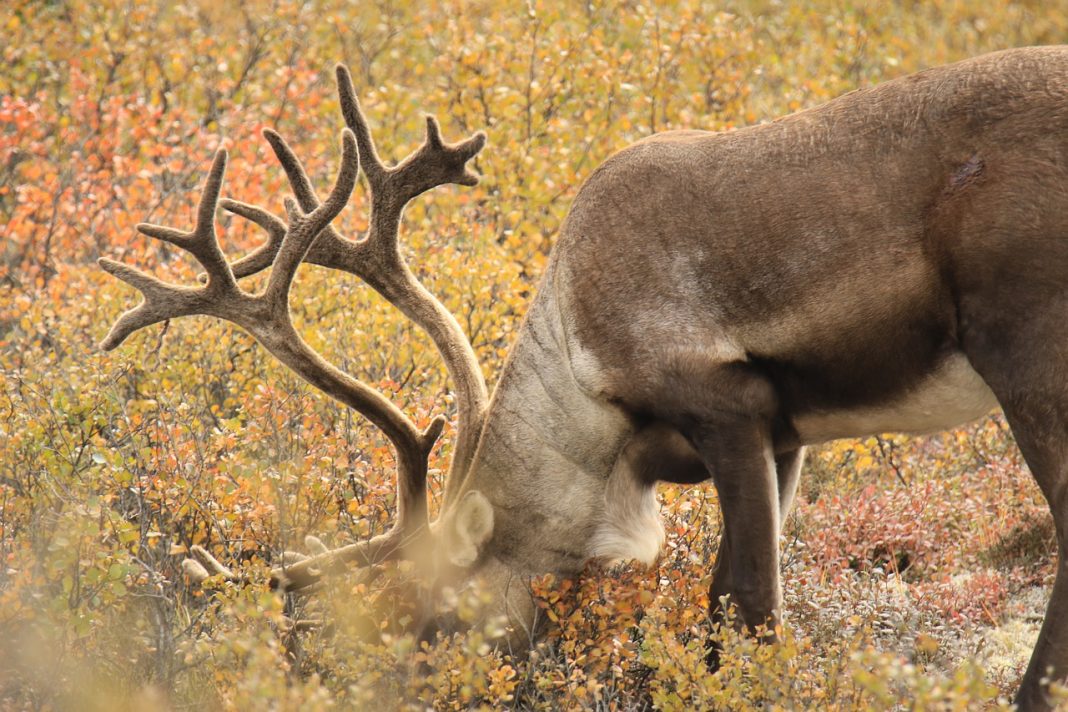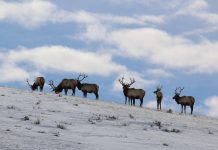The Western Arctic Caribou Herd is one of the largest herds in the world. However, the Caribou Herd is shrinking every year. In 2019, the Caribou Herd was estimated at 244,000 animals. But, by 2021 the Herd was only estimated to have 188,000 animals in it. This decline is a part of an even larger trend. As recent as 2003, the Caribou Herd had nearly 500,00 animals in it.
“It’s around 60 animals per day that died. This decrease is huge. If this happens again two years from now, we’re going to be really panicking.” – Western Arctic Caribou Herd Working Group (WACHW) member Tom Gray
The WACHW Makes Changes
These declines have prompted the WACHW to come together to discuss management changes to protect the herd. The WACHW voted to change the herd’s status from “conservative declining” to “preservative declining” because of the declines. This new change will most like affect hunting regulations going forward.
The WACHW also discussed some of the issues that the herd is facing. Hotter than normal temperatures and small snow levels have affected the caribou’s migration patterns. In the past cold weather and snow forces the herd to migrate quickly to the winter grounds. However, with these noticeable changes, the herd’s migration has been delayed up to two months.
These delays also coincide with the caribou rut, which leads to other problems. Once the bull caribou hit the rut their migration patterns screech to a halt. Once the bulls find any cows along the migration path they stop migrating and stick to the first set of cows they find. The bulls being delayed means that subsistence hunters kill more cows and calves. Many subsistence hunters believe that caribou bulls that are rutting will have bad-tasting meat. So, even when the bulls finally arrive they are not targeted. Unfortunately, this all leads to more female caribou being taken. Additionally, the Red Dog Mine Road is listed as being a barrier that is slowing some of the migration. Wildlife officials are unsure why the lightly-traveled road is such a barrier. However, in 2016, a study showed that a little over 25% of migrating caribou will not cross the road.
Collecting Data
Overall the reasons for The Western Arctic Caribou Herd decline is multifaceted and creating a solution may need to be as well. Another issue plaguing the herd is low harvest reporting. Historically, the area has had very low harvest data, when you couple that with the steady decline of the herd and it leaves huge holes in the overall data of harvest success and the caribou population. The ADFG is working on creating a better harvest data collection. Better reporting would give officials more data on the herd and help them make informed management decisions going forward.
We will continue to work with hunters and communities to improve compliance. The people of Northwest Alaska depend heavily on caribou and reporting their harvest each year is a simple way they can ensure the viability of the herd for their children and grandchildren.” – Alaska Department of Fish and Game Wildlife Biologist Alex Hansen.
Changes are expected to be suggested and potentially made in November of 2022. That is the earliest the Board of Game will consider changes.
You can read more about the declining Western Arctic Caribou Herd by clicking here. Likewise, you can check out our hunting news page by clicking here.
What are your thoughts on this declining caribou herd? What do you think needs to be done? Have you ever caribou hunted before? Let us know in the comments!















